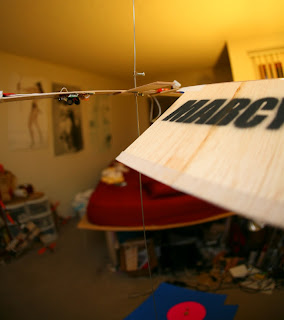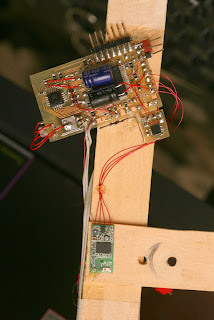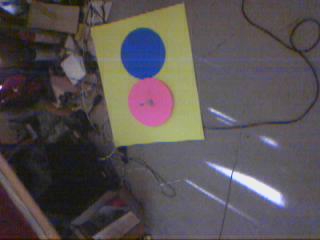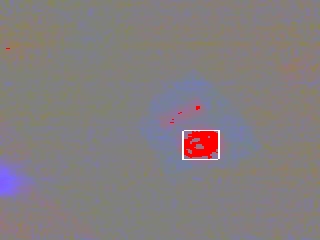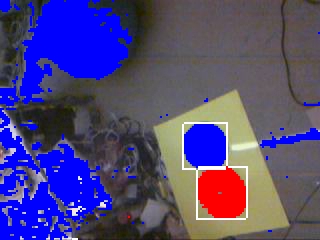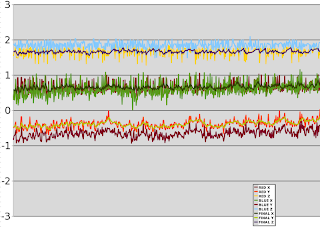
Our friends at MaxBotix have updated their offering of ultrasound sonar sensors by adding the new High Resolution LV line. The defining characteristic of this new line of sonars is the 1mm resolution. Yes. 1mm. Well, more correctly, "the HRLV-MaxSonar-EZ Sensors offer calibrated 1 mm accuracy of 0.1% at 1 meter," so at greater distances, the ranging might be off by a millimeter or more. Up to 5 millimeters at 5 meters, if the accuracy were linear. I can live with that. *grin*
The new sensors offer a similar near end range, a minimum of 30cm, and the data sheet describes a 5 meter maximum range. This is slightly shorter than the 6.4 meter maximum range of the LV line or the 7-10 meter range of the XL, but my thinking is beyond 15 feet off the deck, you might not notice if your multicopter switches to using the barometer for alt_hold. Like the other product lines, the specifics of range are most likely subject to the beam pattern. As with the LV line, it is available in a variety of beam patterns off the shelf, and they offer custom solutions for customers who require it.
This new sensor line offers the same interface as existing sonar products, including analog, serial/TTL, and pulse width, comes in the same form-factor we to which are accustom, but the manufacturer provides details on additional distinguishing characteristics of this new line over the LV line, including:
- Higher resolution output
- Automatic calibration of, noise, humidity, and voltage for consistent, long term, operation.
- Automatical compensate for speed of sound changes due to the effects temperature changes
- Advanced firmware to handle a variety of noise sources
- Simultaneous multiple sensor operation
- Noise filtering is even better than previous MaxSonar products
- Automatic target size compensation
With this level of resolution, I expect there are new technical challenges related to air temperature changes in near-real time, and this suspicion is somewhat supported by two features of this sensor. First, there is it's onboard support for compensation of "self heating" through an onboard temperature sensor. Second, there is support for an external temperature sensor, also available from MaxBotix, which when combined with the onboard temperature sensor, can eliminate a potential "drift of ... up to 3%."
The product page also reports that the HRLV are designed to support simultaneous sensor operation, but it is not clear from the initial information if this is handled through time triggered operation, as with the other sonar lines, or if this sensor discriminates between its pulse and those of other nearby sonar units in some new fashion.
Here are the beam patterns available off the shelf.

There are a range of other features worth discussing, but let me not distract you from the important questions. Or rather, the important question. With this type of high resolution, I would expect this sonar to come at matching high price. Like the LV and XL lines, different sensors are priced differently, but t The lineup is advertised at MSRP $28.95 - $34.95 for a single sensor, with volume discounts available.
I should mention right now that I have no ties to MaxBotix, except as a fellow customer. I don't get any discounts by bringing this news to you, and at these prices, I don't really need any (but I'd gladly go in on volume purchases if anyone wants to organize some, hint-hint 3DR team.) I was notified by email about the new line in a product announcement email. And that is important to this audience because it also informed me of another useful bit of information. These sonars are begin offered at a 25% discount until 7/15/2012 if you use the discount code en4v en4V [the code is case sensitive.]
A quote included with the product announcement (not attributed):
“1-mm resolution is so stable, that when measuring typical objects at a distance of one meter, the readings do not change by more than 1-mm.”
See the linked data sheet or the product Web page for more information.



